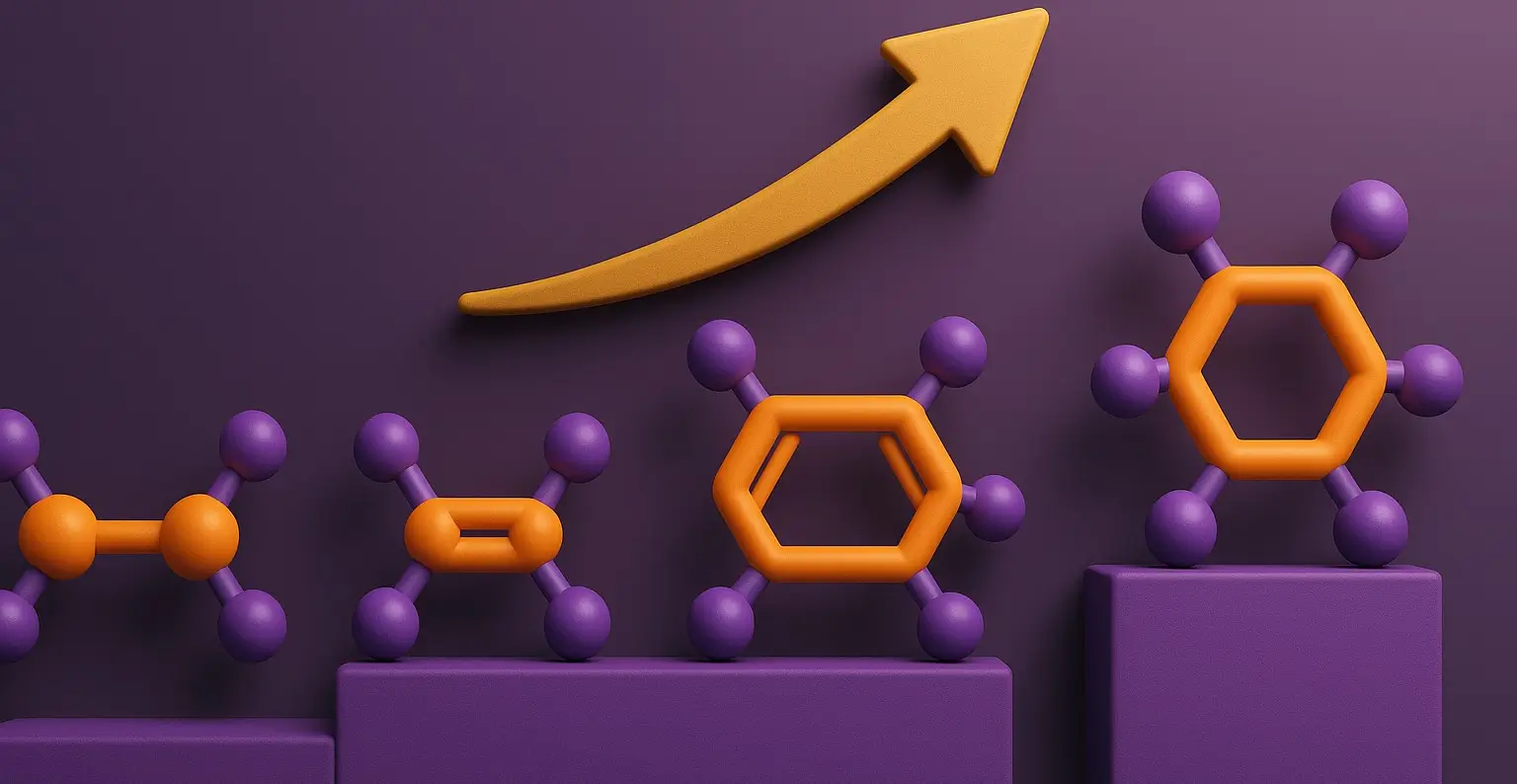- Stability of Conjugated Dienes are organic compounds containing two double bonds separated by a single bond (–C=C–C=C–).
- The stability of conjugated dienes is significantly higher than that of isolated or cumulated dienes due to resonance and delocalization of π-electrons across the conjugated system.
- This delocalization allows the π-electrons to be shared over four carbon atoms, forming a conjugated π-system, which lowers the overall energy of the molecule and increases its stability.
Conceptual Understanding of Stability of Conjugated Dienes
-
Definition
- Conjugated dienes are organic compounds with two double bonds separated by a single bond.
- This arrangement allows π-electron delocalization, enhancing molecular stability.
-
Example
- 1,3-Butadiene (H₂C=CH-CH=CH₂) is a common conjugated diene, consisting of alternating double bonds.
Electronic Structure and Stability of Conjugated Dienes
-
Resonance Stabilization
- π-Electrons in conjugated dienes are delocalized over multiple atoms.
- Resonance structures distribute electron density, reducing molecular energy and increasing stability.
- Non-conjugated dienes (isolated double bonds) lack this delocalization, making them less stable.
-
Heat of Hydrogenation as a Stability Measure
- Hydrogenation (H₂ addition) converts dienes to alkanes and releases heat energy (exothermic).
- Lower heat release = Higher stability of the original diene.
Example: Hydrogenation of 1,3-Butadiene
- Reaction: $H2C=CH-CH=CH2 + 2H2 -> CH3-CH2-CH2-CH3$
- Energy Released: -119 kcal/mol
- Less energy released than expected (if double bonds were isolated), proving higher stability.
Advertisements
Comparison with Isolated Double Bonds
- Example: Hydrogenation of Two Propene Molecules
- Reaction: $H2C=CH-CH=CH2 + 2H2 -> CH3-CH2-CH2-CH3$
- Energy Released: -60 kcal/mol (per molecule: -30 kcal/mol).
- Higher energy release than conjugated dienes → Isolated double bonds are less stable.

